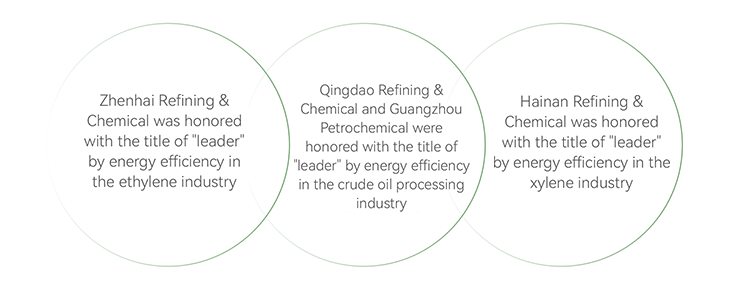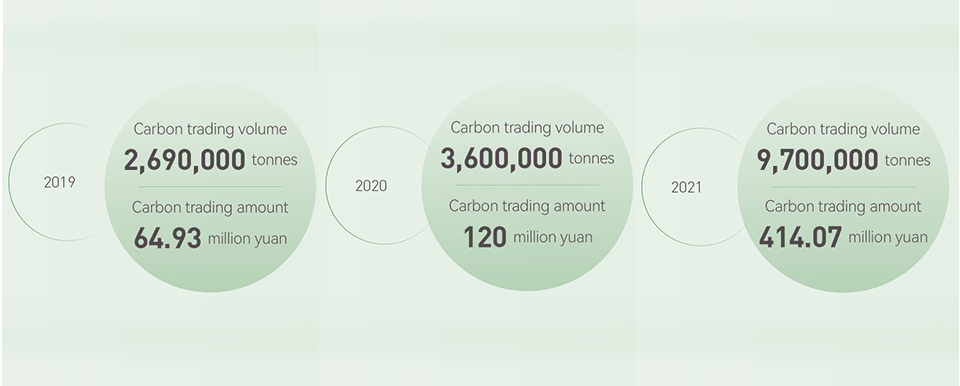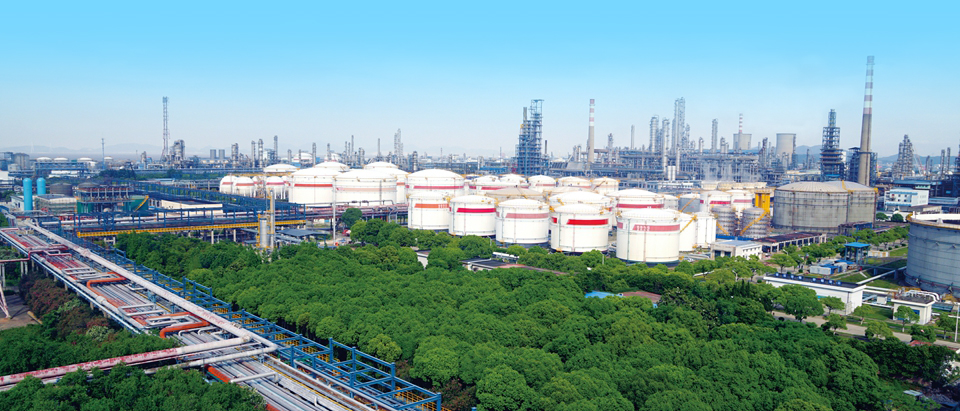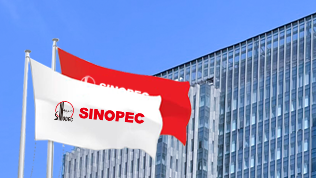In keeping with the decisions and arrangements of the CPC Central Committee and the Central Government on carbon peaking and carbon neutrality, Sinopec included carbon emission management and control into its development plan; intensified energy management and pushed for the reduction of greenhouse gas emissions, to develop a paradigm for green development.

Energy efficiency improvement
Sinopec has put extra efforts into the implementation of the "energy efficiency improvement" program; and perfected the system for energy management. Through energy conservation management; energy conservation through technology; and utilization of new energies and IT construction, it has worked to save energy resources; increase the efficiency of energy utilization and build green and clean enterprises. In 2021, the subordinate enterprises carried out 544 energy efficiency improvement projects in total, saving 967,000 tonnes of standard coal and reducing the emission of 2,380,000 tonnes of carbon dioxide.
Improved the system for energy management
Developed and released the 2021 Energy Environmental Responsibility Letter to fulfill the objectives for energy efficiency improvement; dynamically track the intensity and quantity of energy consumption at subordinate enterprises and urge them to scientifically and reasonably develop annual production plans; optimize production and operation and control energy consumption.
Revised Sinopec's Measures for Managing the Inspection of Energy Conservation in Fixed Asset Investment Projects, to put an end to energy waste at the source and improve energy utilization efficiency.
Deepened benchmarking work
Took an active role in the energy efficiency "leader" campaign organized by the State ministries and commissions and industrial associations and learnt from first-class performers. Studied and established energy efficiency benchmark indicators and organized benchmarking between enterprises and devices to tap the potential and improve energy efficiency.
Accelerated the R&D and popularization of energy conservation technologies
Developed and popularized new energy conservation technologies; worked for breakthroughs in energy conservation processes, technologies and devices; scaled up the application of new energy conservation processes, technologies and devices that are mature and applicable such as those for the improvement of the energy efficiency of integrated oil and gas field development, the optimization of the energy system, the utilization of lowtemperature heat, the comprehensive energy conservation treatment of the industrial cooling water system, and the renovation of key energy-consuming equipment for energy conservation purposes.
Advanced the utilization of new energies
Built a clean and low-carbon energy consumption structure, and developed wind energy, solar energy, geothermal energy and some other renewable energy utilization projects.
Enhanced IT-based energy management
Expanded the application of the energy management system, and made energy management better and more based on information.
Conducted energy conservation inspection and energy audit
Followed the national plan and arrangement for energy conservation inspection; organized energy conservation inspection and audit in six subordinate enterprises; issued circular notices about energy conservation inspection; urged enterprises to align what they did with the inspection results and focused on rectification to ensure compliance with relevant laws and regulations.
Management of greenhouse gas emissions
Sinopec has kept intensifying the management of greenhouse gas emissions; and further advanced the reduction of carbon dioxide and methane emissions. To date, the Company has been granted the title of "Low-carbon Example in China" for 11 consecutive years.
Reduction of carbon dioxide emission
Developed and revised the Measures of Sinopec for the Management of Carbon Emissions; the Measures of Sinopec for the Management of Carbon Trade; and other institutional documents to regulate the management of carbon emissions; intensify the inspection of carbon emissions from project construction and control carbon emissions.
Refineries continued to recycle high-concentration carbon dioxide discharged from hydrogen and synthesis of ammonia production, and captured 1.52 million tonnes of carbon dioxide; using the CO2-flooding technology, oilfield enterprises injected 310,000 tonnes of carbon dioxide to increase oil recovery production of 89,000 tonnes.
Reduction of methane emission
Undertook pilot project of monitoring methane emissions from the oil gas exploitation industry assigned by the Ministry of Ecological Environment; developed the Plan of Sinopec for the Implementation of the Pilot Project of Methane Monitoring and Evaluation and arranged methane emission monitoring work in an orderly manner.
Oilfield enterprises continued to intensify the application of the enclosed transportation process; recovered pipe gas; advanced the comprehensive utilization of flare gas; strengthened the recycling of scattered wells in remote areas; and recovered natural gas. In 2021, about 717 million m3 of methane was recovered in total, reducing greenhouse gas emissions equivalent to 10.75 million tonnes of carbon dioxide.
Research on carbon footprints
Deepened the application of the outcomes of carbon footprint calculation and research for aviation kerosene, lubricant base oil, polypropylene and p-xylene; took an active role in the development of national and industrial standards; saw through the project Product Carbon Footprints, Product Category Rules and Petrochemical Products approved by the State Ministry of Industry and Information Technology.
Management of carbon assets
Gained a full picture of the quota surplus or deficit at enterprises; developed carbon trading plans; set up a full-time carbon trading team; centralized carbon trading management; fulfilled carbon quotas as scheduled.
Further optimized the calculation module of the carbon asset management information system to support device-class carbon examination and carbon verification at all the subordinate enterprises and laid a solid foundation for developing emission control measures.

Increasing exchanges and cooperation
Sinopec is active in multilateral cooperation and is exploring the path to realizing carbon peaking and carbon neutrality. It is working to be a demonstrator and leader in promoting ecological civilization and a response to climate change. Sinopec has signed an agreement with the National Forestry and Grassland Administration on comprehensive strategic cooperation, according to which both sides will cooperate on the path to realizing carbon peaking and carbon neutrality; improving the carbon sink capability of forestry and grassland, and promoting voluntary tree planting. Sinopec has also collaborated with COSCO Shipping and China Eastern on carbon neutrality, and realized the first batch of carbon neutral oil. Sinopec initiated the China Oil and Gas Methane Alliance, made a joint declaration and has vigorously advanced the methane emission control campaign across the industrial chain.





 Address
Address Post code
Post code Tel
Tel 京公网安备11010502035639
京公网安备11010502035639 





